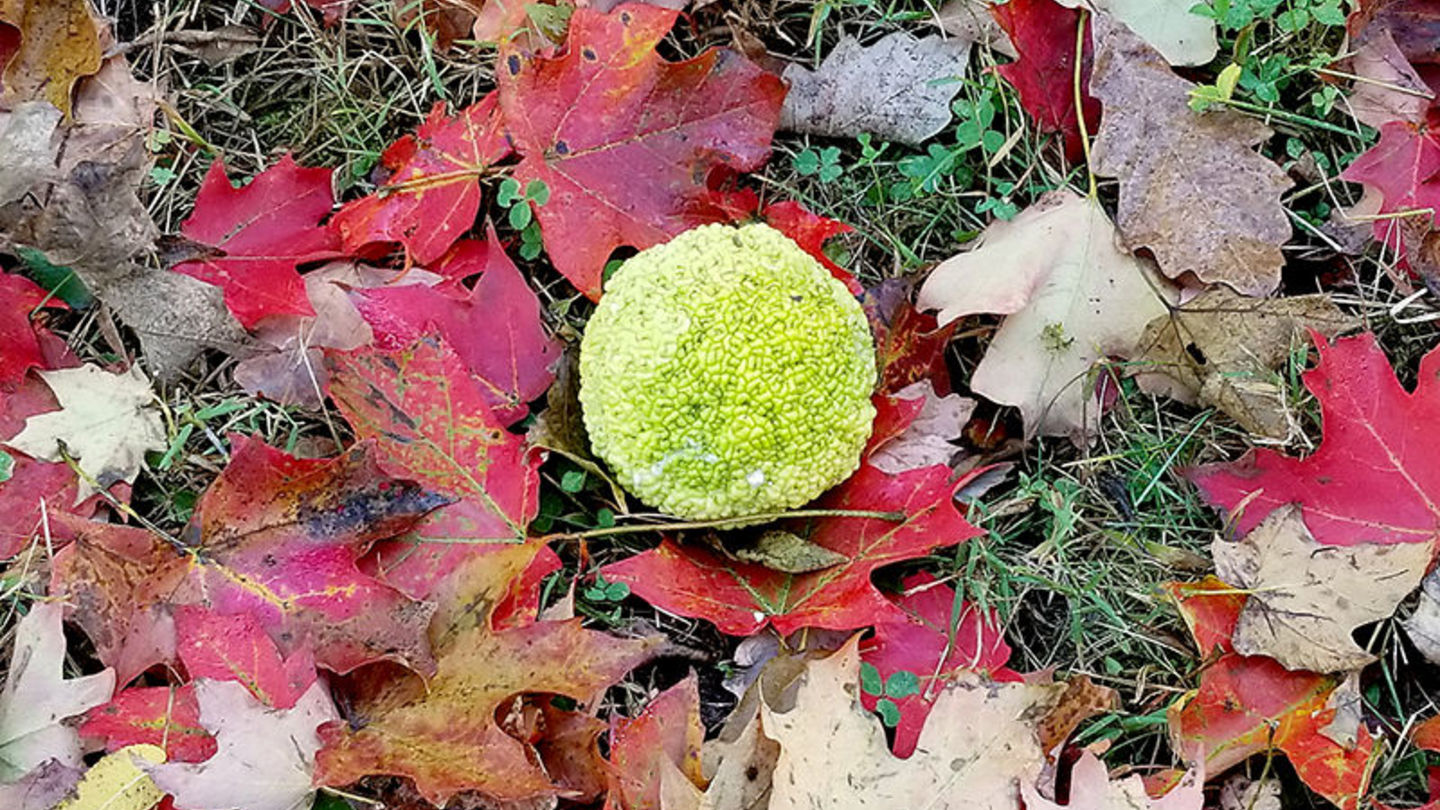
By Kathy Salisbury
Director, Ambler Arboretum of Temple University
Monkey Brains in the Arboretum!
Not really, but kind of. "Monkey Brains" is one of the common names for the lumpy, bumpy lime green fruit of the Osage Orange tree. Each fall we look forward to these enormous fruits, which are about the size of a grapefruit, falling to the ground so we can marvel at their weirdness.
The Osage Orange (Maclura pomifera) is an ecological anachronism (something out of time and place) meaning that the fauna that would eat these giant fruits moving around their native region and planting them no longer exist. Wooly mammoths would be a good example of who used to eat these. Honeylocusts and Kentucky Coffeetrees, which bare colossal pods, are also examples of anachronistic plants.
The tree is named for the Osage Indians, who are the people associated with the plant's native range in Texas, Arkansas and Oklahoma. How did it get here if there are no more animals to move the fruits around? Farmers found value in the thorny trees as hedgerows and living fence lines keeping livestock from roaming too far. The long-lasting weather resistant wood is also prized by outdoor furniture makers. Now it is moved around by humans.
You will probably notice these this time of the year in clusters on the shoulders of roads. These roads probably follow the property boundaries of farm fields or what were once farm fields, in more ways than one this plant tells us about the history of the place we now inhabit.
You can learn more about the Osage Orange and other anachronistic plants in this great article.
